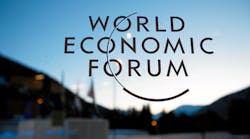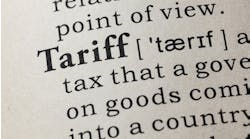Reducing Supply Chain Barriers Would Offer Huge Boost to World Trade: WEF Report
Reducing supply chain barriers could increase global GDP and world trade much more than reducing all import tariffs, according to a report released today by the World Economic Forum in collaboration with Bain & Co. and the World Bank.
If all countries reduce supply chain barriers halfway to global best practice, finds "Enabling Trade: Valuing Growth Opportunities," global GDP could increase by 4.7% and world trade by 14.5%, far outweighing the benefits from the elimination of all import tariffs. In comparison, completely eliminating tariffs could increase global GDP by 0.7% and world trade by 10.1%. Even a less ambitious set of reforms that moves countries halfway to regional best practice could increase global GDP by 2.6% and world trade by 9.4%.
The reports also finds that economic gains from reducing supply chain barriers are more evenly distributed across countries than the gains associated with tariff elimination. Regions that stand to benefit in particular under these scenarios are sub-Saharan Africa and South East Asia. Such large increases in GDP would be associated with positive effects on unemployment, potentially adding millions of jobs to the global workforce.
Supply chain barriers can result from inefficient customs and administrative procedures, complex regulation and weaknesses in infrastructure services, among many others. According to the report, lowering supply chain barriers is effective because it eliminates resource waste and reduces costs to trading firms and, by extension, lowers prices to consumers and businesses.
The report, initiated by the forum’s Global Agenda Councils on Logistics & Supply Chains and Global Trade & FDI, provides information regarding how policies can create unnecessary supply chain costs and inefficiencies based on 18 case examples spanning multiple industries and regions. The case examples highlight that clusters of policies jointly impact supply chain performance; that a concerted approach is needed to cut across different policy domains; that there may be specific tipping points that need to be achieved for reductions in supply chain barriers to have a significant impact on trade; and that small and medium enterprises (SMEs) tend to face proportionally higher supply chain barriers and costs.
The report recommends that governments create a focal point to coordinate and oversee all regulation that directly impacts supply chains; that public-private partnerships be established to undertake regular data collection, monitoring and analysis of factors affecting supply chain performance; and that governments pursue a more holistic, supply-chain-centred approach towards international trade negotiations to ensure that trade agreements have greater relevance for international business and do more to benefit consumers and households.
“The case studies show that countries can lose their competitive advantage in terms of factor costs, if the costs associated with their supply chain barriers are high,” said Mark Gottfredson, partner, Bain & Co. “The lesson for companies is the importance of understanding supply chain barriers and how the associated costs and delays can erode other sourcing advantages. For example, a case study on the apparel industry illustrates how delays at the border, inconsistent application of regulations, and infrastructure issues completely offset significant labor cost advantages for many countries.”
“Supply chain barriers are more significant impediments to trade than import tariffs,” said Bernard Hoekman, Director of the World Bank’s International Trade Department, who is also the chair of the Forum’s Global Agenda Council on Logistics & Supply Chains. “Lowering these barriers will reduce costs for businesses, and help generate more jobs and economic opportunities for people.”
Some examples from the 18 case studies in the report include:
- In Brazil, managing customs paperwork for exports of agricultural commodities can take 12 times longer than in the European Union (a full day versus a couple of hours).
- Poor quality infrastructure services can increase the input material costs of consumer goods by up to 200% in certain African countries.
- In Madagascar, supply chain barriers can account for about 4% of total revenues of a textile producer (through higher freight costs and increased inventories), eroding the benefits of duty-free access to export markets.
- Obtaining licenses and lack of coordination among regulatory agencies in the U.S. lead to delays in up to 30% of chemical shipments for one company – each late shipment costs $60,000 per day.
- In Russia, product testing and licensing in the computer sector can lead to high administrative costs and delay time-to-market anywhere from 10 days to eight weeks.
- Local content requirements, rule-of-origin restrictions and pilferage at the border, can increase costs by 6-9% of consumer technology products in the Middle East and North Africa.
- Eliminating supply chain barriers in the South East Asian rubber market could reduce carried inventories by 90 days, representing a 10% reduction in product cost.
- India’s Preferential Market Access regulation, which provides preference for locally produced high-tech products in government procurement, could increase costs by 10%, over the cost of imports.
- Adopting electronic documentation for the air cargo industry could yield $12 billion in annual savings and prevent 70-80% of paperwork-related delays.
- Easing regulatory compliance of international trade that SMEs face when selling through the Internet could increase cross-border SME sales by 60-80%.




